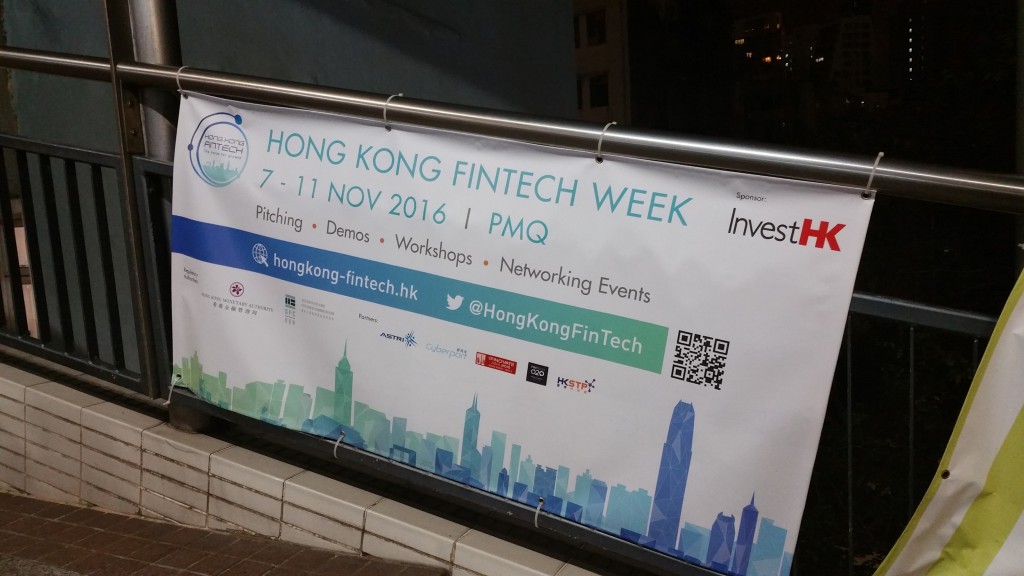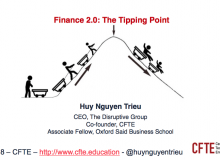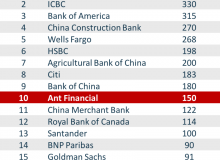I was in Asia 6 months ago – for Finnovasia and Rise in Hong Kong. After spending some more time in Singapore, I came back to Europe very excited about the potential of Fintech in Asia. This wasn’t of course a big surprise since I had been involved with Fintech HK and SuperCharger for a long time, but being immersed in the ecosystem is always better than seeing it from far…
I am now back in the region, and looking forward to Singapore and Vietnam after having spent the last few days in Hong Kong. Last week was the first edition of the Hong Kong Fintech Week, and I wasn’t too sure what to expect – especially after having read the very critical piece in the FT about the tough environment for Fintech in Hong Kong.
I only arrived in HK Thursday, so missed the first part of the HK Fintech Week – it was an unfortunate clash of dates that Web Summit was the same week… And I wish of course I had been there for the announcement of the SuperCharger finalists… But that left me enough time to attend the Regtech presentation of Douglas Arner and Janos Barberis at Hong Kong University, and the Hong Kong Monetary Authority conference the next day.
Douglas and Janos’ presentation was brilliant – the best Regtech presentation I had attended! After a few days of little sleep, I didn’t expect to be so intensely focused during their one hour-talk, and I learnt much – not only about Regtech, but also about the HK Fintech crowd. Whereas 6 months ago, I found people very keen to learn about Fintech in HK, this time the audience already knew Fintech well and asked very detailed questions about implementation, interactions with the regulators, etc. And the event was packed – the organisers had to change room to accommodate the 300 people (most of them seemed to be finance professionals) who registered for the lunch time presentation.
The next day was the HKMA conference, and I was on auto-pilot because of the jet lag… I missed the speech from Norman Chan, HKMA’s CEO, but the transcript gives a good idea of the initiatives from the regulator.
I had a catch up with Benedicte Nolens (Chair of the Fintech Advisory Group) and Ron Chiong (Associate Director) of the SFC (the equivalent of the SEC in HK), and we talked about the different regulatory approaches for Fintech – and the need for regulatory sandbox or not. It’s clear that the concept of sandbox in Fintech has attracted a lot of attention recently (Janos had mentioned that there are 9 regulatory sandboxes in the world, out of which 5 in Asia).
But in general, there are large differences in what these sandboxes actually do/ cannot do under their standing statutory framework. Benedict noted that most of the sandboxes announced so far typically serve one or more of the 3 Fintech categories below:
– B2C Fintech companies offering the same kinds of activities as traditional financial companies, or on the contrary totally innovative models. The rationale used by regulators who have set up sandboxes for this group comes from the size of these B2C Fintechs, and therefore their limited impact on financial stability. Or the difficulty for innovative models to neatly fit under existing regulations. For most regulators the ability to grant or not to grant waivers to the rules they administer is defined in law.
– B2B Fintechs and Regtechs offering services to traditional financial companies, including to help them manage their regulatory requirements and processes, as well as to better service clients. That would include, for example, B2B Fintechs such as robo-advisors, as well as Regtechs assisting on AML compliance, suitability assessments, and regulatory reporting, etc. In HK, the HKMA has introduced a supervisory sandbox to serve this category from the perspective of the registered institution that adopts such technology.
– And finally B2B Fintechs and Regtechs that offer products and services directly to the regulators to assist these regulators (securities regulators, central banks, insurance regulators, etc) in supplementing their supervision. The Bank of England accelerator is a good example of this. The SFC also issued an invitation to tender in regards to Regtech.
(More info about Benedicte Nolens views here).
I found that it was a very interesting framework, with many sandboxes falling into the first category (i.e. some kind of “exemption” while the startups work closely with the regulator, although that might raise some issues). The second category is where many of the Regtech companies operate, with the question of whether a regulator could – and should – give a stamp of approval to selected providers. And finally, the third category is for example what the Bank of England does with its accelerator.
It was also great to get the views of Charles d’Haussy, the new Head of Fintech of Invest HK, about the ecosystem. Between Invest HK, HKMA, SFC, Cyberport, Astri, etc. there are definitely a lot of entities involved in Fintech in HK. Although most people stressed that in HK most initiatives were led by the private sector – in contrast to Singapore where MAS, the regulator, is the main driver.
Overall, I was very surprised by how quickly Fintech HK had changed in 6 months, from new initiatives to the maturity of the ecosystem. I am therefore very excited to continue my Asian tour and be in Singapore for the Fintech Festival this week – more than 10 thousand people have registered for the event, which makes it the largest Fintech event in the world! Fintech in Asia is definitely on a roll…
PS : you can follow the Singapore events on Twitter here. And come and say hi if you’re there (scroll down to speaking engagements)
If you want the latest news on Disruptive Finance and Fintech:
– You can enter your email address to receive an email whenever I write a new post
– You can also follow me on Twitter here
And thanks for reading. Don’t hesitate to share if you like this post!








